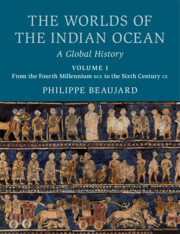Book contents
- The Worlds of the Indian Ocean
- The Worlds of the Indian Ocean
- The Worlds of the Indian Ocean
- Copyright page
- Dedication
- Epigraph
- Contents
- Maps and Charts (in color plates)
- Illustrations (in color plates)
- Figures
- Tables
- Abbreviations
- Preface
- Acknowledgments
- Prologue
- Introduction: The Geography of the Indian Ocean and Its Navigation
- Part I The Ancient Routes of Trade and Cultural Exchanges and the First States (Sixth–Second Millennium bce)
- Part II The Birth of the Afro-Eurasian World-System (First Millennium bce – Sixth Century ce)
- Bibliography
- Index of Geographical names
- Name Index
- Subject Index
- Plate Section (PDF Only)
- References
Bibliography
Published online by Cambridge University Press: 04 October 2019
- The Worlds of the Indian Ocean
- The Worlds of the Indian Ocean
- The Worlds of the Indian Ocean
- Copyright page
- Dedication
- Epigraph
- Contents
- Maps and Charts (in color plates)
- Illustrations (in color plates)
- Figures
- Tables
- Abbreviations
- Preface
- Acknowledgments
- Prologue
- Introduction: The Geography of the Indian Ocean and Its Navigation
- Part I The Ancient Routes of Trade and Cultural Exchanges and the First States (Sixth–Second Millennium bce)
- Part II The Birth of the Afro-Eurasian World-System (First Millennium bce – Sixth Century ce)
- Bibliography
- Index of Geographical names
- Name Index
- Subject Index
- Plate Section (PDF Only)
- References
- Type
- Chapter
- Information
- The Worlds of the Indian OceanA Global History, pp. 643 - 765Publisher: Cambridge University PressPrint publication year: 2019



